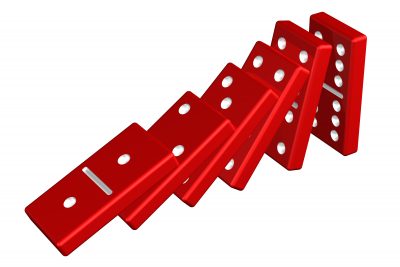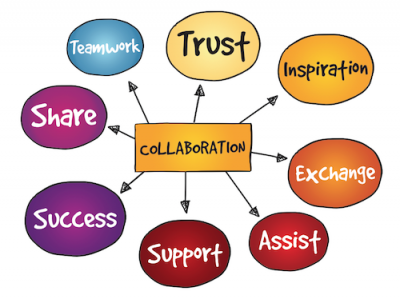 Artist and blogger Phil Davies say the reason most frustrated artist stay frustrated is that they don’t know how to practice their drawing and painting skills. Each time they draw or paint a picture, they just hope it turns out better than the last one. If we approach caregiving skills as an art, the question then is can it be mastered?
Artist and blogger Phil Davies say the reason most frustrated artist stay frustrated is that they don’t know how to practice their drawing and painting skills. Each time they draw or paint a picture, they just hope it turns out better than the last one. If we approach caregiving skills as an art, the question then is can it be mastered?
Davis says art is supposed to be a rewarding hobby, when most of time one is stressing over every pencil mark and brushstroke, desperate not to make a mistake. Could it be that many artists don’t have the skills, techniques and confidence to enjoy what they are doing?
Like artists, caregivers need to break down the big, difficult skills into smaller building blocks. The problem is that very few caregivers (or artists) do this. Depending on your current skill level of caregiving, whether you are a professional or family member – you want to practice with smaller building blocks first.
Artists must first learn the art of color mixing.
Additive mixing is used to produce a wide range of colors using only three primary colors additive mixing of colors is unintuitive as it does not correspond to the mixing of physical substances (such as paint) which would correspond to subtractive mixing. For instance, one can additively mix yellow and blue by shining yellow light together with blue light, which will result in not green but a white light. As in this example, one should always have the mixture of light in mind when considering additive color mixing as it is the only situation where it occurs. Despite being unintuitive, it is conceptually simpler than subtractive mixing. Two beams of light that are superimposed correspond to additive mixing.
By convention, the three primary colors in additive mixing are red, green, and blue. In the absence of color or, when no colors are showing, the result is black. If all three primary colors are showing, the result is white. When red and green combine, the result is yellow. When red and blue combine, the result is magenta. When blue and green combine, the result is cyan.
Like color mixing, caregivers blend many skills (that first must be learned) so that the outcome is a well blended hue of providing safety, security, trust and enhanced quality of life. In order to achieve this, it takes dedicated practice – understanding and accepting that mistakes will be make along the way. There are so many variables to the art of caregiving that when blended together can result in a beautiful (not perfect!) care partner relationship, healthy care receiver and empowered care giver. Like art, it’s a work in progress. Can it be mastered?
I believe that caregivers can gain enormous confidence with exceptional training, continued education and the will to keep learning. Caregiving, like art, is an every changing range of color and feelings, and for that I would say our mastery is in the journey. Like artists, if this approach is practiced, it will transform quality!
Pam Brandon is President/Founder of AGE-u-cate® Training Institute and a passionate advocate for older adults and those that serve them. Pam seeks to empower professional and family caregivers, faith communities and organizations in better understanding older adult and caregiver needs.
 A survey form the National Council on Aging, UnitedHealthcare and USA Today concluded that most Boomers are optimistic about their future. That is until you ask them about needing help as they age. When it comes to the issues surrounding who will provide caregiving when they no longer are able, optimism turns to fear.
A survey form the National Council on Aging, UnitedHealthcare and USA Today concluded that most Boomers are optimistic about their future. That is until you ask them about needing help as they age. When it comes to the issues surrounding who will provide caregiving when they no longer are able, optimism turns to fear. Call it awareness, attention, focus, presence, or vigilance. It’s proving to be a powerful and effective practice in coping with stress. Caregiving can easily top the charts on stress, especially for caregivers of elders with chronic illness and dementia. Mindfulness for caregivers means learning to live in the moment, accept the reality of a situation, and filter out distractions.
Call it awareness, attention, focus, presence, or vigilance. It’s proving to be a powerful and effective practice in coping with stress. Caregiving can easily top the charts on stress, especially for caregivers of elders with chronic illness and dementia. Mindfulness for caregivers means learning to live in the moment, accept the reality of a situation, and filter out distractions. Our hyper competitive, profit driven business world often scoffs at the idea of collaboration. I supposed I’m naive, but I want to think that those in senior care are more passionate and compassionate about working with others for the greater good. I still believe this is true for most of us. Working well with others almost always comes back to us ten fold. This is true in life and business.
Our hyper competitive, profit driven business world often scoffs at the idea of collaboration. I supposed I’m naive, but I want to think that those in senior care are more passionate and compassionate about working with others for the greater good. I still believe this is true for most of us. Working well with others almost always comes back to us ten fold. This is true in life and business.